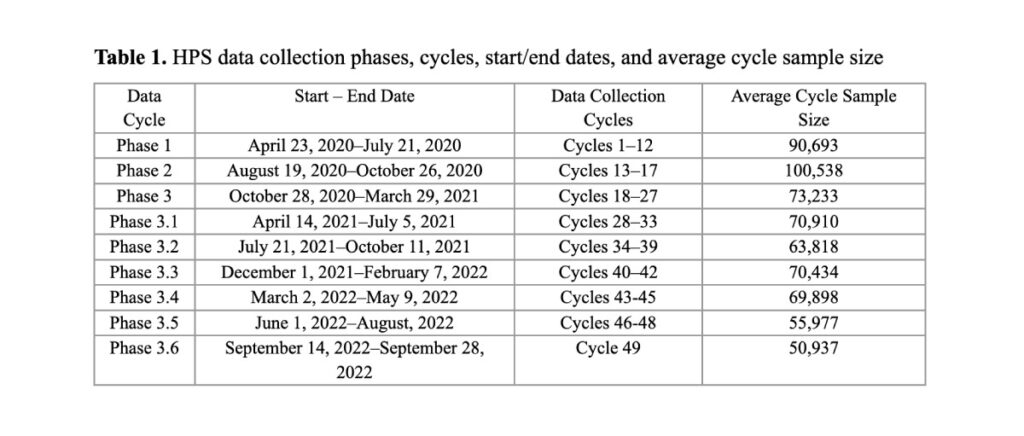Racial disparities in socio-economic and health outcomes are a topic of concern in the United States. As Deepthi Kolady and Weiwei Zhang show, they have also played a major role in the adverse socio-economic outcomes of COVID-19 since April 2020.
Introduction
Racial disparities refer to the unequal distribution of resources, power, and economic opportunity across races in a society. Racial disparities in socio-economic outcomes such as education, employment, income/wealth, housing, mobility and rates of poverty affect the well-being of all Americans.
Among other things, unfavorable socio-economic environments adversely affect health outcomes. In the United States, COVID-19 mortality rates were highest among African American, Hispanic/Latino, and Native Americans (Tai et al., 2021). While this is known, detailed examination of the extent of racial disparities in the adverse socio-economic outcomes of COVID-19 is lacking.
Pre-pandemic racial disparities in adverse socio-economic outcomes
Poverty rates among Black people (18.8%) and Hispanics (15.7%) were much higher than among Non-Hispanic Whites (7.3%) in 2019 (Bowdler and Harris 2022). Unemployment rates were highest for Blacks and American Indian and Alaska Native (6.1%) followed by Hispanics (4.3%), and lowest for Whites (3.3%) in 2019. Household food insecurity was highest for Black people (19.1%), followed by Hispanics (15.6%) in 2019 and lowest for Non-Hispanic Whites (7.9%) (Coleman-Jensen et al., 2020). Pre-pandemic levels of adverse socio-economic outcomes were higher for racial and ethnic minorities, Blacks especially, than for Non-Hispanic Whites.
Racial disparities in adverse socio-economic outcomes since the COVID-19 pandemic
In a recent study (Zhang and Kolady 2022), we used real-time population survey data to demonstrate the extent of unequal and adverse socio-economic impacts of the COVID-19 pandemic on minority groups in the United States. We used Household Pulse Survey (HPS) Public Use Files (PUF), a bi-weekly online survey, developed by the U.S. Census Bureau that started on April 23, 2020. HPS data collection is implemented in phases and cycles with multiple cycles in one phase (Table 1).

Our study focused on the following adverse socio-economic outcomes: loss of employment/ income, food scarcity, housing insecurity, and perceived unmet needs of mental health. Housing insecurity includes two outcomes: having difficulties with rent or mortgage payments and the likelihood of an eviction or foreclosure. Food scarcity measured the extent of non-availability of food (often/sometimes not enough to eat).
We analyzed the extent of adverse socio-economic outcomes for the following five groups: Non-Hispanic Whites, Non-Hispanic Blacks, Non-Hispanic Asians, Non-Hispanic other minorities, and Hispanics. Non-Hispanic other minorities include participants who identified as American Indian and Alaska Natives (AIANs), another race/ethnicity, two or more races (Table 2).

Our analysis showed that employment/income loss was highest for Hispanics (26.7%) followed by Non-Hispanic Blacks (22.9%) and Non-Hispanic others (21.6%). Employment/income loss for Non-Hispanic Asians (15.7%) was close to the population average (16.3%).
The prevalence of food scarcity for racial/ethnic minorities except Non-Hispanic Asians was more than two times higher (16.2–19.3%) than for Non-Hispanic Whites (7.2%). One out of five Non-Hispanic Blacks reported food scarcity (19.3%).
The prevalence estimates of missing payments for all minority groups were more than two times higher than the estimate for Non-Hispanic Whites (7.4%): they were highest among Non-Hispanic Black people (21.5%), followed by Hispanics (16.2%), Non-Hispanic Asians (15.1%) and Non-Hispanic others (14.9%).
As per our analysis, 10.9% of the total population reported not receiving mental health services when they needed counseling or therapy from a mental health professional in the previous four weeks. Non-Hispanic others had the highest percentage of unmet mental health service needs (16.4%). The other groups were close to the population average with the lowest percentage of unmet mental health service needs among Non-Hispanic Asians (6.7%).
Conclusions
It is clear from our study that racial/ethnic disparities in adverse socio-economic outcomes were present during the COVID-19 pandemic, with ethnic and racial minority groups being at a disadvantage, although in different degrees. These differences may have contributed to the racial disparities in mortality rates and infections over the period. To reduce these racial disparities in health outcomes, the first imperative is to address racial disparities in socio-economic outcomes.
References
Bowdler, J. and Harris, B. (2022). Racial Inequality in the United States. U.S. Department of Treasury. Available at Racial Inequality in the United States | U.S. Department of the Treasury. Accessed 12/18/2022.
Coleman-Jensen, A., Rabbitt, M.P., Gregory, C.A. and Singh, A. 2020. Household Food Security in the United States in 2019, ERR-275, U.S. Department of Agriculture, Economic Research Service
Tai, D. B. G., Shah, A., Doubeni, C. A., Sia, I. G., & Wieland, M. L. (2021). The Disproportionate Impact of COVID-19 on Racial and Ethnic Minorities in the United States. Clinical Infectious Diseases, 72(4), 703-706. doi:10.1093/cid/ciaa815
Zhang, W. Kolady, D. 2022. The COVID-19 Pandemic’s Unequal Socioeconomic Impacts on Minority Groups in the United States. Demographic Research, 47: 1019-1032. DOI: 10.4054/DemRes.2022.47.33


